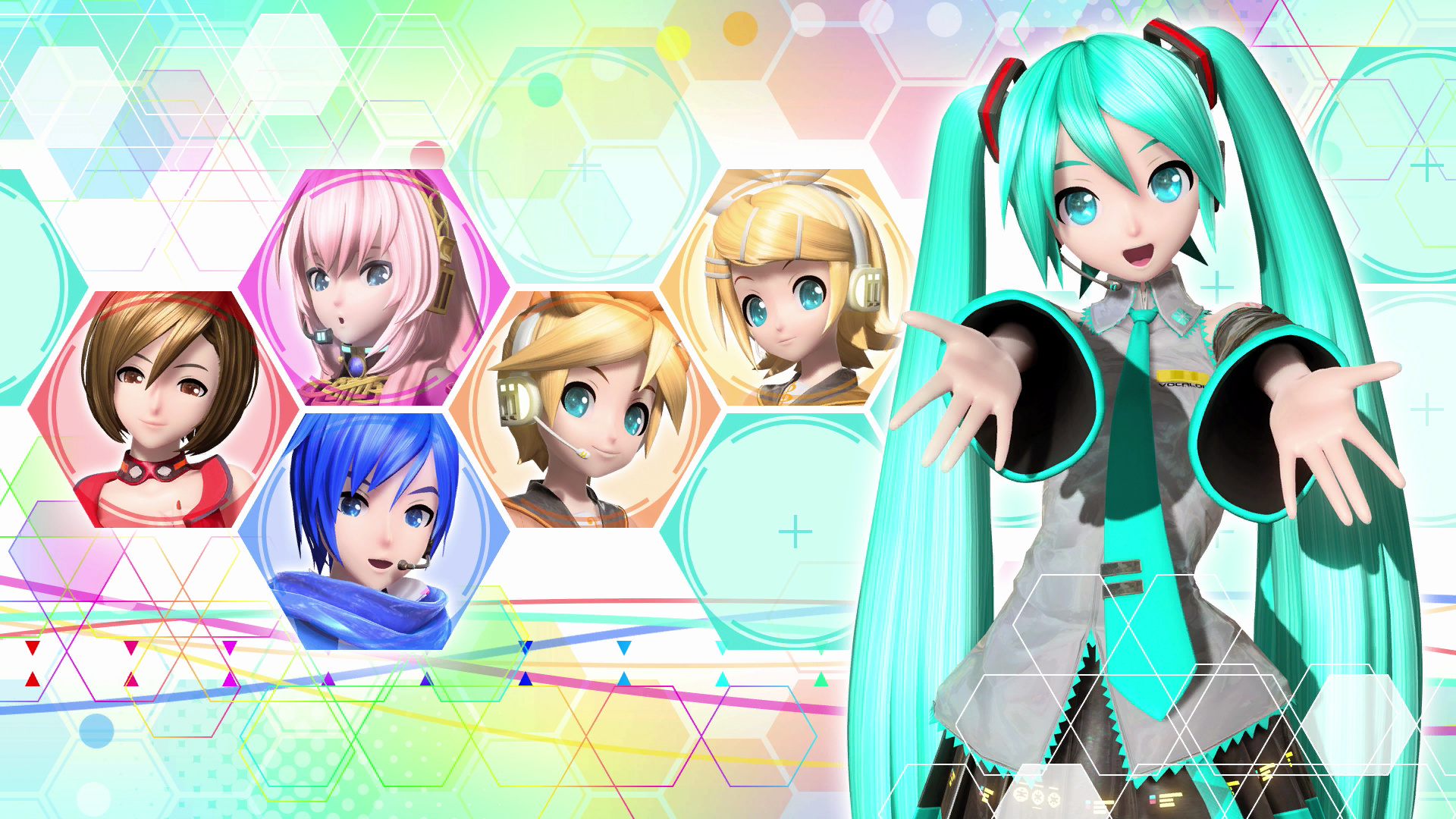Hatsune Miku: Project DIVA Future Tone for the PlayStation 4 is the latest in a growing number of Project DIVA games that have been released in the West. But rather than being a sequel to the Project DIVA F and Project DIVA X games, Hatsune Miku: Project DIVA Future Tone on the PlayStation 4 is actually a port of the arcade game Hatsune Miku: Project DIVA Arcade Future Tone. While it’s very similar in terms of its rhythm gameplay, it doesn’t contain additional elements such as the DIVA Room and Edit mode from Project DIVA F or the new story mode from Project DIVA X. But that doesn’t mean the PlayStation 4 port of Project DIVA Future Tone doesn’t feature a lot of content, quite the contrary. In fact, it also includes new features and modes that aren’t available in any of the previous Project DIVA games.
The game has the benefit of bringing almost all of the content found in the arcade game to the PlayStation 4, which comprises a ton of songs found in previous Project Mirai and Project DIVA games. The base version of the game, Prelude, is free but only contains two songs and a couple of modules and accessories. You can basically regard it as demo. The real meat of the game can be found in two DLC add-on packs called Future Sound and Colorful Tone. Aside from containing over 100 songs each with even more modules; these also add the Hairstyle Customization and Survival Courses features to the game. You can buy both bundles for the price of $53.99, which means the full package costs about as much as a regular new console game. For the purpose of this review, I played the game with both DLC packages.
Rhythm game
The rhythm game is similar to those found in previous Project DIVA games, with a few differences. To give you an idea of how it works: while playing a song there’s a music video that runs in the background. In the foreground, “Melody Icons” (icons that match the PlayStation controller buttons) will appear at the edge of the screen and move towards a target icon. When the melody icon reaches the target icon, the player has to press the corresponding button. Time it correctly and the Clear Gauge at the bottom of the screen will start to fill. Successfully clearing the songs requires filling the Clear Gauge past a certain point, indicated on the gauge by a vertical line. The Life Gauge increases as you hit notes correctly, but decreases if you don’t. If it runs out, you fail the song.
There were a few new notes that I hadn’t encountered in previous Project DIVA games. One of them are slide notes, which require you to press the analog sticks in one direction, or use the L1/R1 shoulder buttons. The other are notes that require simultaneous button presses, sometimes four at once. I personally found these rather challenging, and I’ll probably spend some time in the game’s new practice mode to learn these. This mode is also new, and allows you to practice particular segments of a song that you’re having trouble with. It’s a feature that was missing from previous Project DIVA games and one that I hope will become standard from now on.
The game’s difficulty ranges from Easy to Extra Extreme. On Normal, something that I found notable is the fact the game uses all available melody icons. In previous Project DIVA games this wasn’t the case, and I personally found that this made Normal mode in those games less fun to play, and not necessarily easier either. That said, this Project DIVA game isn’t the most welcoming to newcomers as it does pose a challenge even on Normal difficulty, but on the other hand what I like about the game is that there’s no real pressure on you to make progress. All the songs are available from the start (if you bought the DLC packs) and unlocking modules and accessories for your characters is easy. It’s really up to you decide how you want to play the game, and it’s this freedom that was missing from (for example) Hatsune Miku: Project DIVA X, where unlocking modules was tied to one particular game mode.
Another new addition called the “Survival Courses” are there for those looking for a challenge. Curiously, they’re somewhat hidden as you need to press R2 and L2 simultaneously on the song selection menu to access the new mode. In a Survival Course, you’re asked to complete multiple songs in succession, with the added limitation that the Life Gauge carries over from one song to the next.
What’s interesting from a technical standpoint is that the loading times felt a lot shorter than on Hatsune Miku: Project DIVA X. Similarly, navigating through the song selection menu is also faster. Even on PlayStation 4, navigating through the menus of Hatsune Miku: Project DIVA X felt sluggish. Good to see it’s not the case here.
Customization
Whereas Project DIVA X needlessly complicated the way you acquired modules (character costumes), Project DIVA Future Tone‘s method is very simple and thankfully also doesn’t have the random chance element that Project DIVA X introduced. You simply need to earn VP points by playing the songs, which you can then spend on modules, accessories and hairstyles. That’s all there’s to it, and since you earn points at a reasonably fast pace, you’ll end up being able to acquire all the modules without having to “grind” for points. There’s no obvious incentive here to make the player spend more money on paid DLC to unlock the modules, something which I had my doubts about in Project DIVA X.
Future Tone on PlayStation 4 is also the first Project DIVA game that allows you to customize the outfits of all the characters even in songs that include all six of them (such as Decorator), and it’s also the first to allow you to change the hairstyles separately from the modules. In past Project DIVA games, the hairstyle was always part of the module itself. This means you can now create many more combinations compared to previous titles. It’s once again a relatively small new feature that genuinely improves the game.
Presentation
Graphically, the game is arguably the best looking Project DIVA game ever made. The game delivers a clean 1080P presentation at 60 frames per second, and a lot of the music videos from past Project DIVA games look better than ever in Future Tone. The Project DIVA games typically have a strong anti-aliasing solution and it’s no different here, as jaggies are difficult to spot. Admittedly, the visual quality between the songs does vary. Some of the lesser known songs can look disappointing in comparison, especially in terms of character animation. Project DIVA F, F 2nd and X were visually more consistent, but overall it’s still a clear win for Future Tone.
Contrary to Project DIVA X, Project DIVA Future Tone still has actual music videos. In Project DIVA X, these were all created in a way that they could be performed on any stage, which really made them less interesting to watch. While we’ve seen most of these music videos in past games, it’s nice to see them again in this quality. I have to wonder how SEGA intends to move forward with music videos in future Project DIVA games, but the lack of DLC for Project DIVA X is rather telling, especially since they’re still adding new music videos to the arcade version of Project DIVA Future Tone in Japan.
The game’s art style, on the other hand, does clash with that of the previous Project DIVA games on PS3 and PS4. The latter had an equally varied but softer color template, and while everything was in 3D, the characters still had a 2D look to them. Future Tone on the other hand has 3D characters that almost look like plastic dolls, and the colors are often over-saturated. Personally, I’m not really a fan and prefer the style of the other games, but it’s by no means a deal breaker.
Unfortunately there’s one thing I do find rather disappointing, and that’s the fact that the music videos in the background aren’t actually running in true 60 frames per second. Instead, they appear to be in 30 frames per second and use frame blending to double the frame rate to 60. I imagine few people will care, but the problem is that taking screenshots via the Share button means you’ll get screenshots with blended frames. For the purpose of taking screenshots for this review I found this particularly annoying. In a time where most games are using advanced motion blur techniques, frame blending is a particularly archaic solution.
You can also watch the game’s music videos separately in a playlist (more on that later), and this time pressing the triangle button will take a screenshot which is also stored in the PS4 Share folder (and can also be used as a loading screen in the game). While these screenshots are thankfully taken without the blended frames, I could only seem to store them in JPG format and not as a higher quality PNG.
Playlists, Online Ranking and Localization
The game also allows you to make a playlist to which you can add a range of songs. Starting a playlist will then show all the music videos of these songs one after another (you can also let them play in a random order). It’s here where you can use the triangle button to take screenshots. Project DIVA Future Tone is also the first in the series to add an online ranking board, where you can compare your scores to other players.
As for the localization, this time around there are no translated subtitles in English for the game. Given the amount of songs and the difficulty in translating song lyrics especially, it’s understandable that these weren’t included.
Conclusion
Anyone who played the past Project DIVA games primarily for their rhythm game mode will feel right at home with Hatsune Miku: Project DIVA Future Tone. The game offers more songs and modules than any of its predecessors, while still being sold at a similar price point. The new additions in Future Tone such as the survival courses and the ability to change hairstyles actually improve the game, rather than mess with what the past games already did right (something Project DIVA X did all too often).
While it’s not an easy game for newcomers, it never introduces barriers that would prevent you from simply having fun. You can just change the difficulty levels if you want, and modules can be acquired quickly even when playing on Normal difficulty. As far as I’m concerned this is simply the best Project DIVA game available right now.

